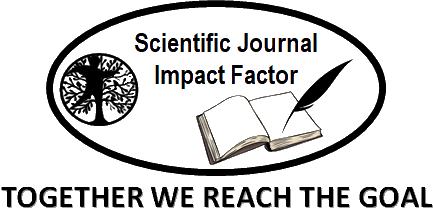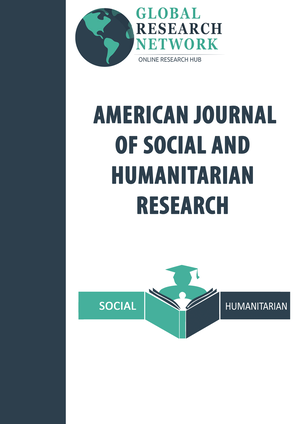Inset Fed Microstrip Patch Antenna Design for 5G Application at 28 GHz
Abstract
Keywords
Full Text:
PDFReferences
A. N. Uwaechai, N. M. Mahyuddin,“A Comprehensive Survey on Millimeter Wave Communications for Fifth-Generation Wireless Networks: Feasibility and Challenges,” IEEE Access, vol. 8, 2020.
J. G. Andrews et al, “What Will 5G Be?,” IEEE Jsac Special Issue On 5g Wireless Communication Systems, vol. 32, no. 6, 2014.
W. roh et al, “Millimeter-Wave Beamforming as an Enabling Technology for 5G Cellular Communications: Theoretical Feasibility and Prototype Results,” IEEE Communications Magazine, vol. 52, no. 2, 2014.
O. Darboe et al, “A 28 GHz Rectangular Microstrip Patch Antenna for 5G Applications,” International Journal of Engineering Research and Technology, Vol. 12, no. 6, 2019.
K. A. Fante, M. T. Gemeda, “Broadband microstrip patch antenna at 28 GHz for 5G wireless applications,” International Journal of Electrical and Computer Engineering (IJECE), Vol. 11, No. 3, June 2021.
M. A. A. Mamun, S. Datto, M. S. Rahman, “Performance Analysis of Rectangular, Circular and Elliptical Shape Microstrip Patch Antenna using Coaxial Probe Feed,” 2nd International Conference on Electrical & Electronic Engineering (ICEEE), 27–29 December 2017.
M. Z. Rahman et al, “Performance Analysis of an Inset-Fed Circular Microstrip Patch Antenna Using Different Substrates by Varying Notch Width for Wireless Communications,” International Journal of Electromagnetics and Applications, vol. 10, no. 1, 2020.
B. A. Rahman and S. O. Hasan, “Simulation Design of Low-Profile Equilateral Triangle Microstrip Patch Antenna Operating at 28 GHz,” Int. J. Commun. Antenna Propag., vol. 12, no. 2, p. 74, Apr. 2022.
S. E. Didi, I. Halkhams, M. Fattah, Y. Balboul, S. Mazer, and M. El Bekkali, “Design of a microstrip antenna patch with a rectangular slot for 5G applications operating at 28 GHz,” TELKOMNIKA (Telecommunication Comput. Electron. Control., vol. 20, no. 3, p. 527, Jun. 2022.
Y. Zhang, J.-Y. Deng, M.-J. Li, D. Sun, and L.-X. Guo, “A MIMO Dielectric Resonator Antenna With Improved Isolation for 5G mm-Wave Applications,” IEEE Antennas Wirel. Propag. Lett., vol. 18, no. 4, pp. 747–751, Apr. 2019.
R. K. Goyal and U. Shankar Modani, “A Compact Microstrip Patch Antenna at 28 GHz for 5G wireless Applications,” in 2018 3rd International Conference and Workshops on Recent Advances and Innovations in Engineering (ICRAIE), Nov. 2018.
Y. Li, “A microstrip patch antenna for 5G mobile communications,” J. Phys. Conf. Ser., vol. 2580, no. 1, p. 012063, Sep. 2023.
C. A. Balanis, “Antenna Theory: Analysis and Design”, John wiley & sons 3rd Edition. 3rd ed., Wiley-Interscience, 2015.
M. A. A. Mamun et al, “Performance Analysis of Line Feeding Microstrip Patch Antenna Using Different Layers of Substrate Materials for Terahertz (THz) Applications,” IOSR Journal of Electrical and Electronics Engineering (IOSR-JEEE), vol. 14, no. 5, 2020.
D. Mathur, S. K. Bhatnagar, and V. Sahula, “Quick estimation of rectangular patch antenna dimensions based on equivalent design concept,” IEEE Antennas and Wireless Propagation Letters, vol. 13, pp. 1469–1472, Jan. 2014.
H. Werfelli, K. Tayari, M. Chaoui, M. Lahiani, and H. Ghariani, “Design of rectangular microstrip patch antenna,” 2nd International Conference on Advanced Technologies for Signal and Image Processing (ATSIP), Mar. 2016, pp. 798-803.
T. S. Bird, “Definition and misuse of return loss,” IEEE Antennas and Propagation Magazine, vol. 51, no. 2, pp. 166–167, Apr., 2009.
M. S. Rana and M. M. R. Smieee, “Design and analysis of microstrip patch antenna for 5G wireless communication systems,” Bulletin of Electrical Engineering and Informatics, vol. 11, no. 6, pp. 3329–3337, Dec. 2022.
M. S. Rana and M. Rahman, “Study of Microstrip Patch Antenna for Wireless Communication System,” in 2022 International Conference for Advancement in Technology, ICONAT 2022, pp. 1–4, Jan. 2022.
W. L. Stutzman, “Estimating Directivity and Gain of Antennas,” IEEE Antennas and Propagation Magazine, vol. 40, no. 4, pp. 7–11, 1998.
N. Kaur, M. Kumar, and J. Singh, “Design of Miniaturized Stair Case Fractal Geometry Based Planar Monopole Antenna for Multiband Wireless Communication Applications,” International Journal of Mechanical Engineering, vol. 7, pp. 641–648, 2022.
DOI: http://dx.doi.org/10.52155/ijpsat.v50.2.7201
Refbacks
- There are currently no refbacks.
Copyright (c) 2025 Md. Abdullah- Al-Mamun, Md. Arifur Rahman, Md. Kisour Chowdhury

This work is licensed under a Creative Commons Attribution 4.0 International License.




















